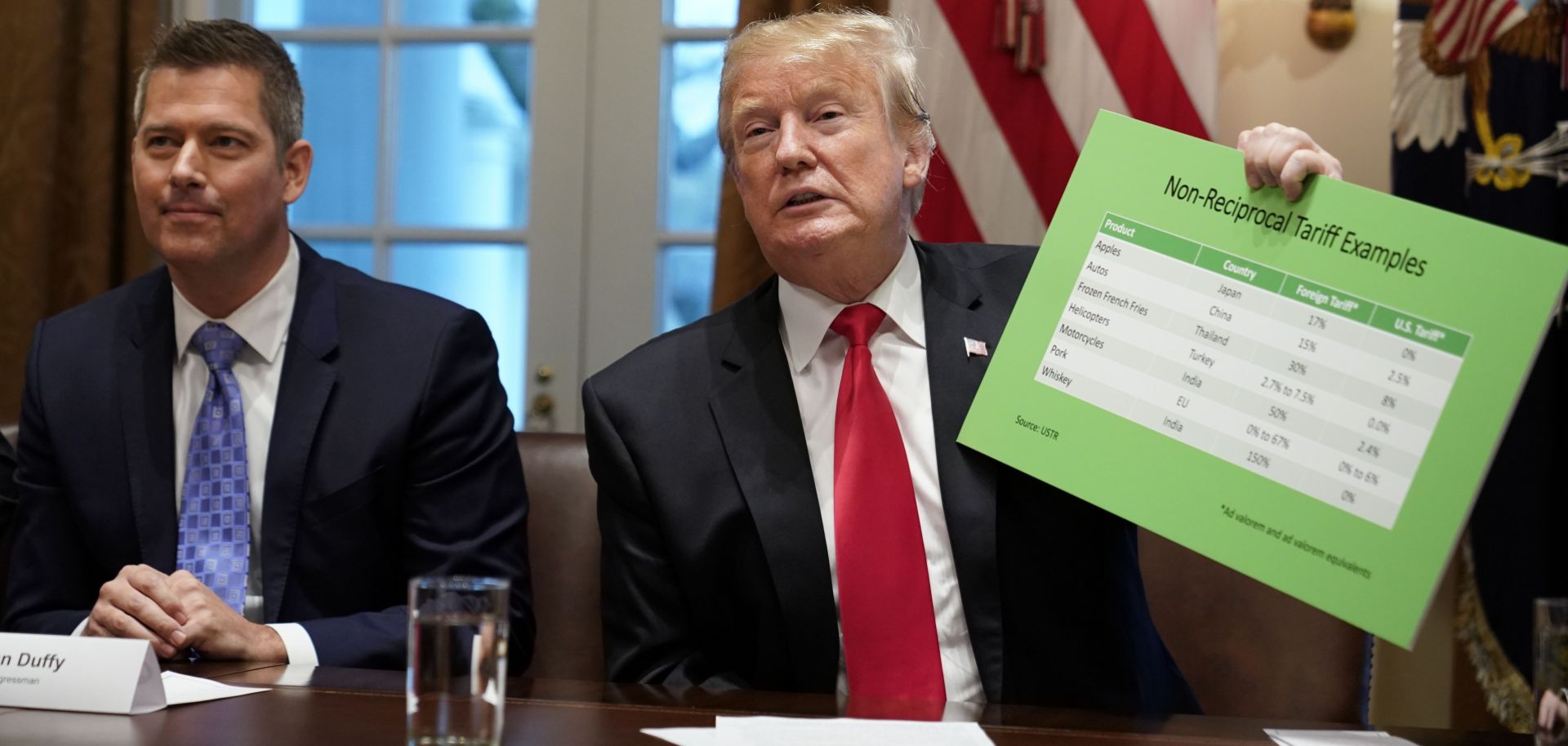COLUMNS
The U.S. Is Fighting a 21st Century Trade Battle Armed With a 1930s Mindset

Jan 31, 2019 | 10:00 GMT

U.S. President Donald Trump holds a tariff table as he speaks in the Cabinet Room of the White House on Jan. 24, 2019. Reducing tariffs might play well to the gallery, but it's not the be-all and end-all of a trade battle.
(MANDEL NGAN/AFP/Getty Images)
Highlights
- The United States may score some successes in persuading its trade partners to reduce their tariffs, but its current strategy fails to address the fact that tariffs are not the biggest limiters of U.S. exports.
- Ultimately, nontariff barriers such as health and safety regulations and intellectual property rights present greater obstacles to trade in the contemporary world than tariffs do.
- With the United States focused on tariffs, its exporters could soon face greater difficulties as competitors in Canada, the European Union, Asia and elsewhere gain access to more markets thanks to comprehensive free trade deals that eliminate more important nontariff barriers.
Subscribe Now
SubscribeAlready have an account?
